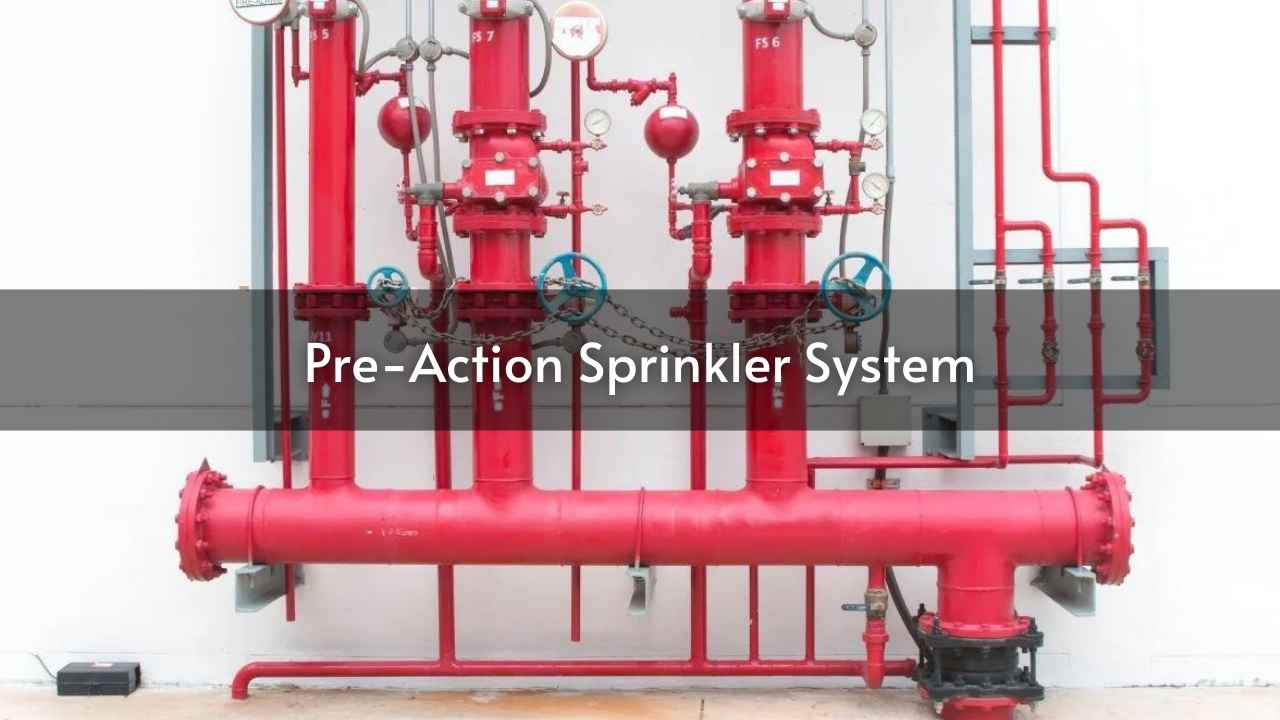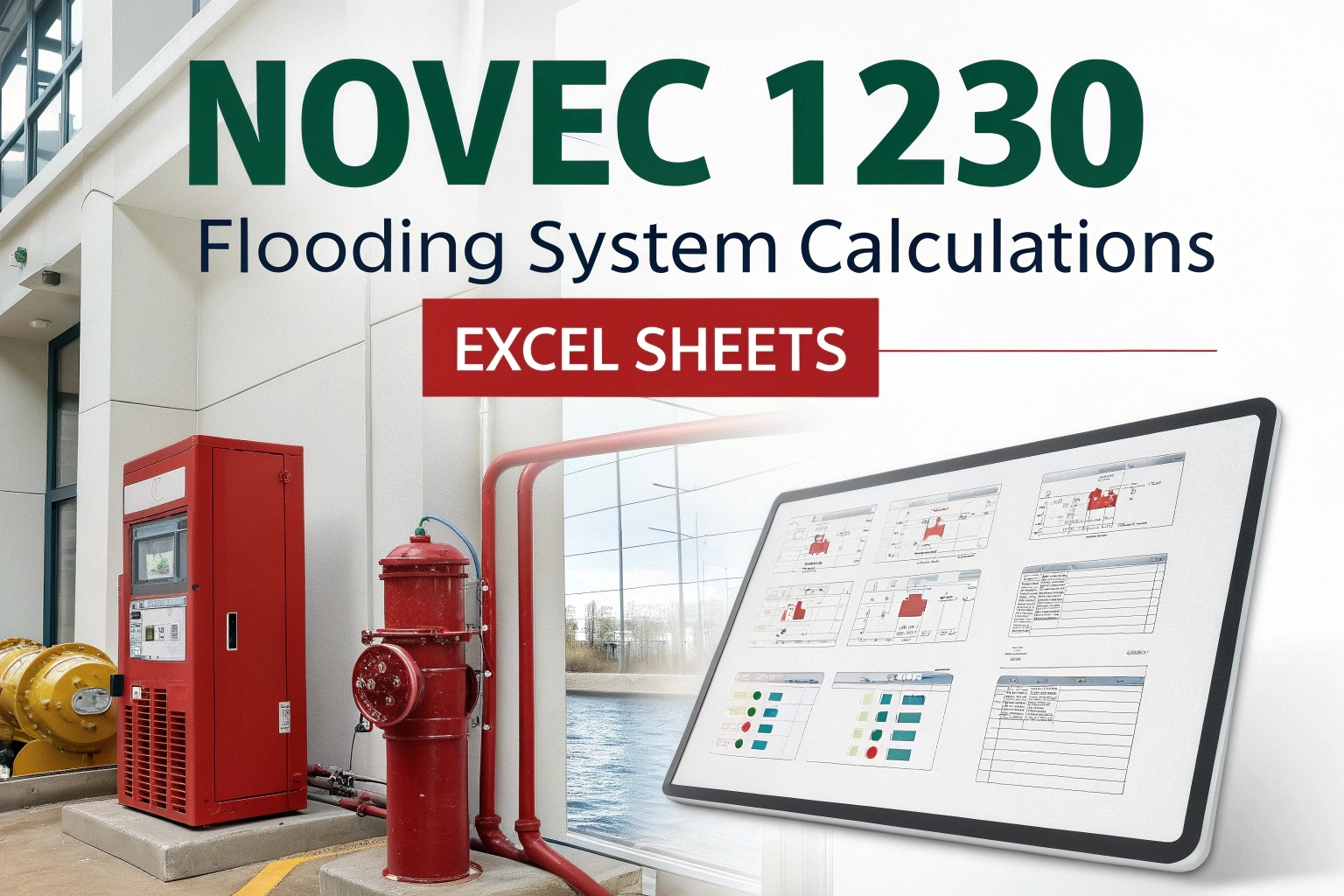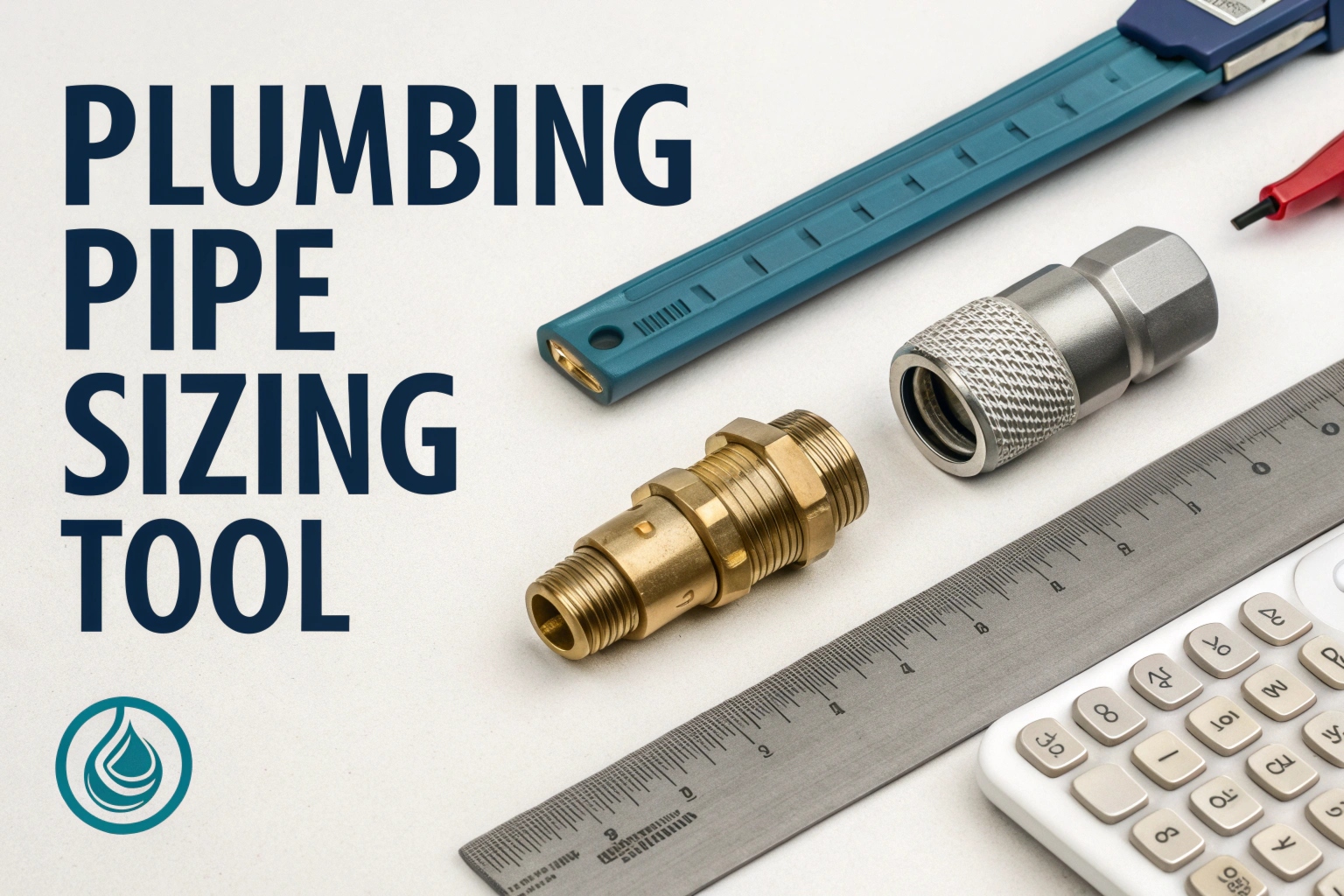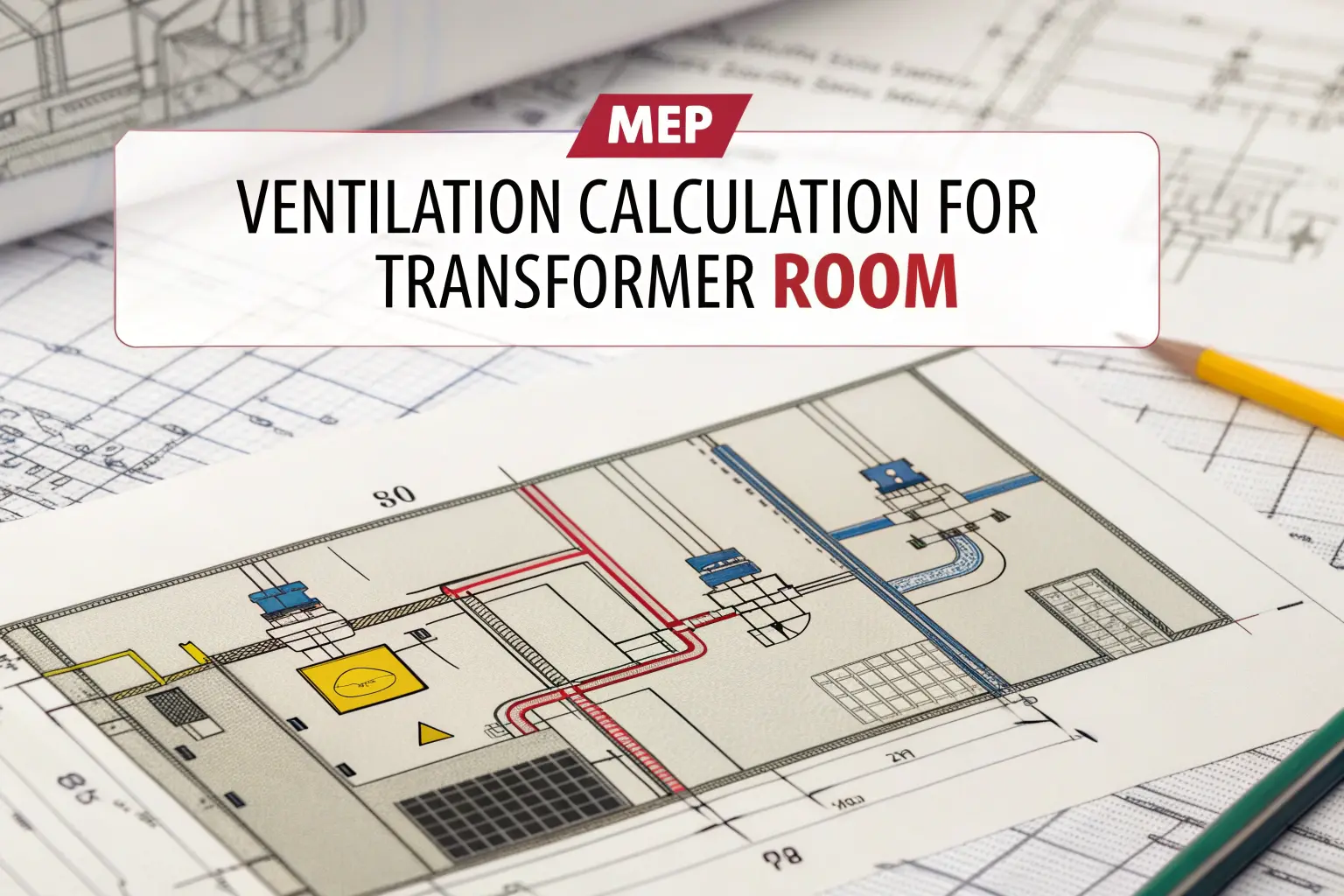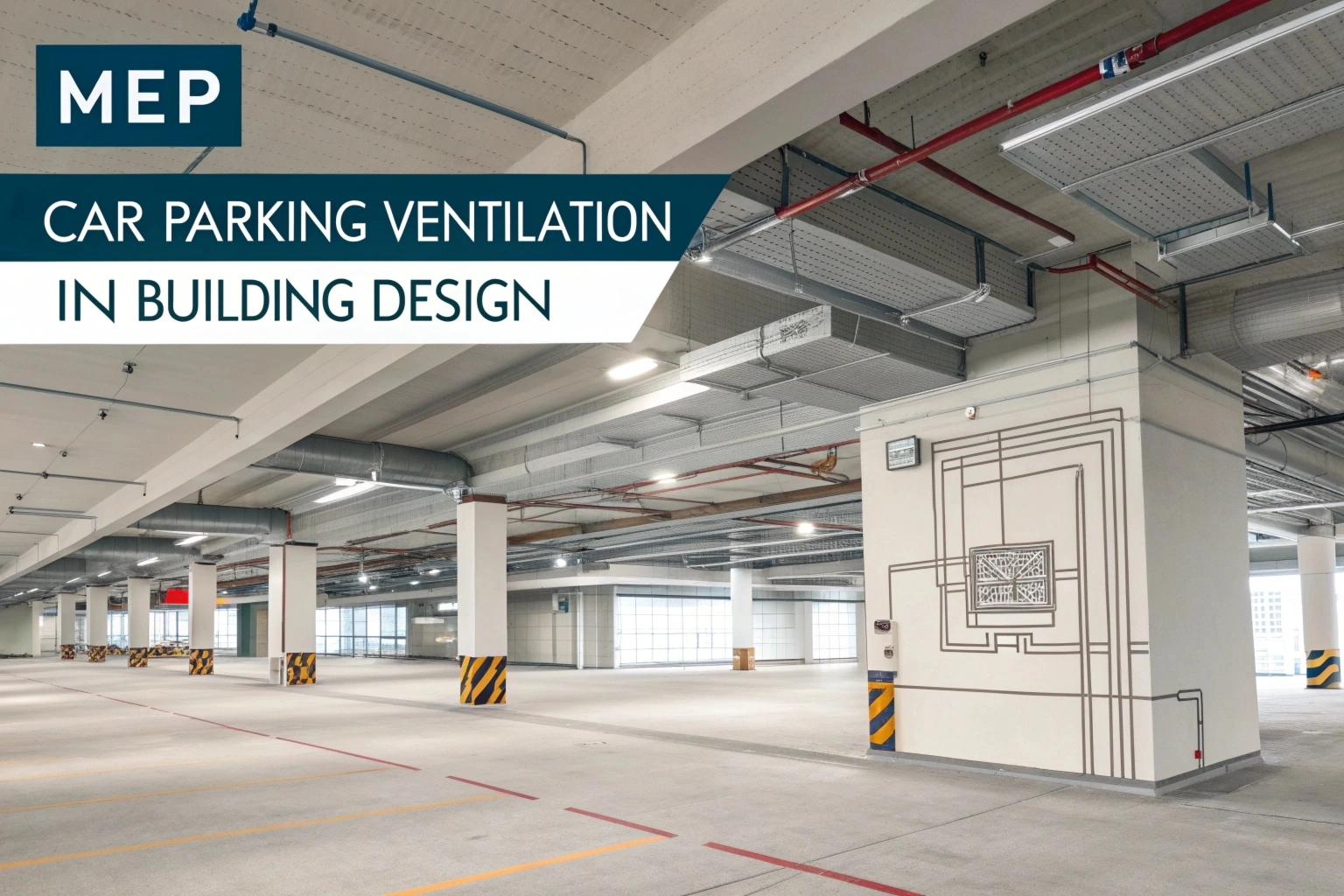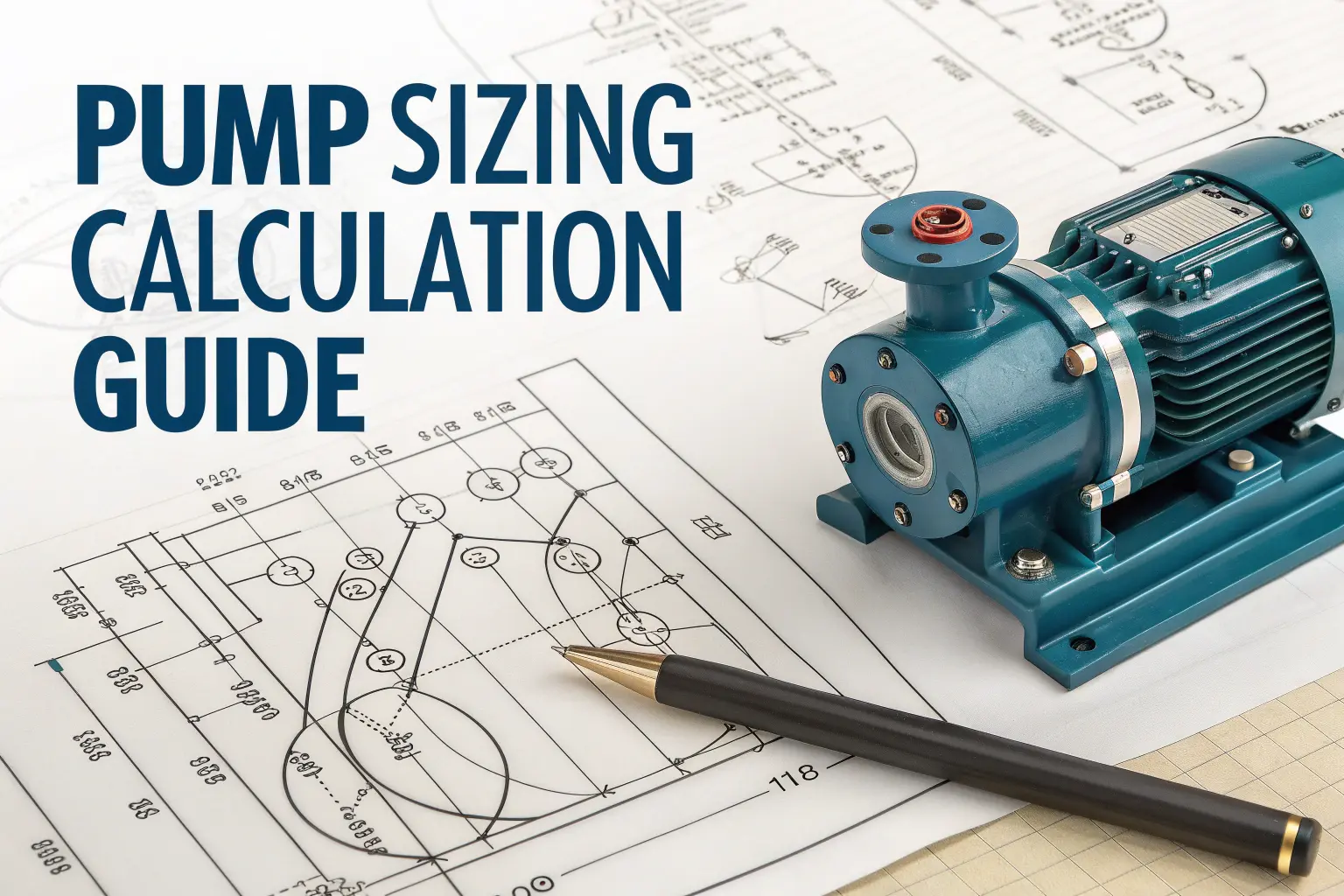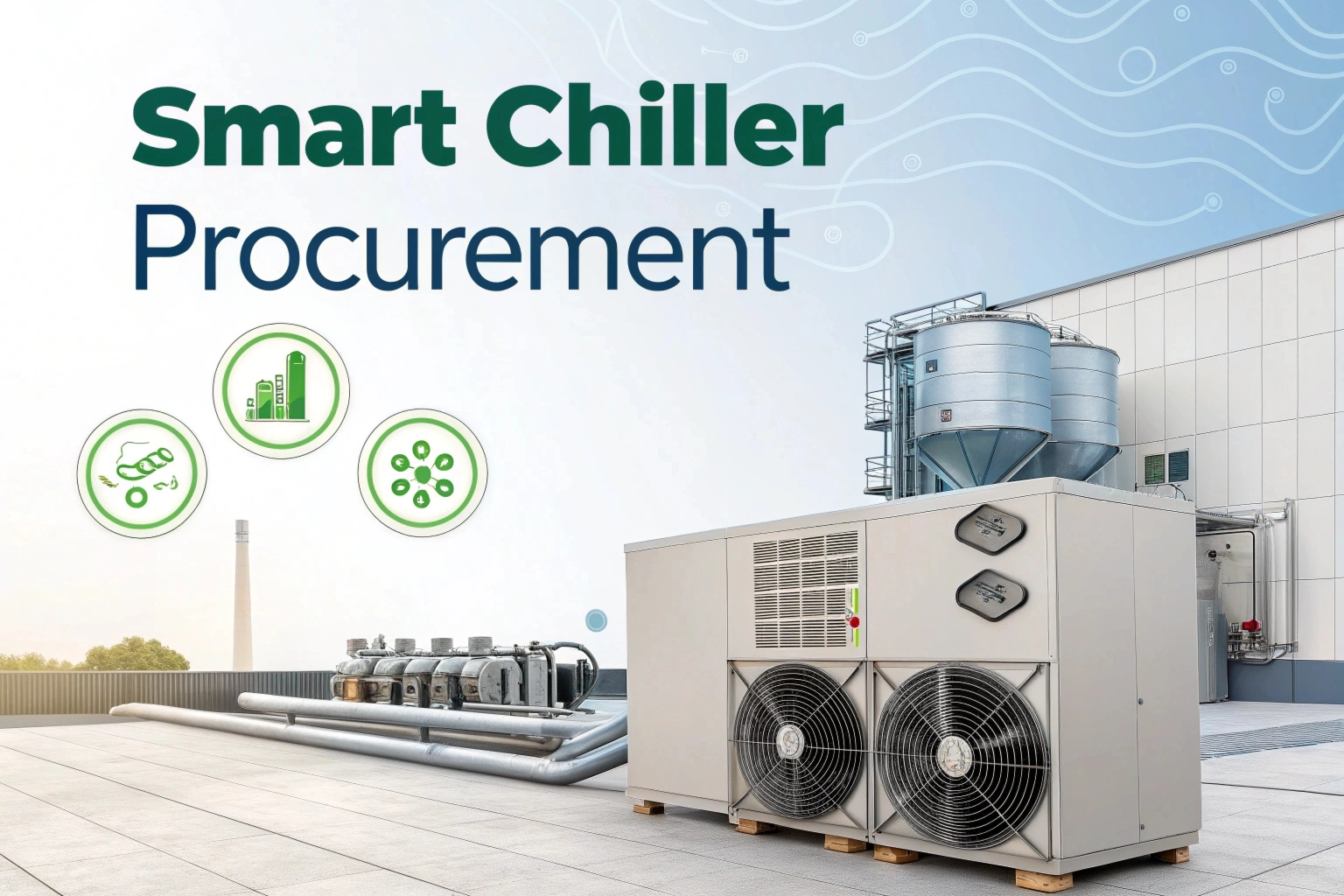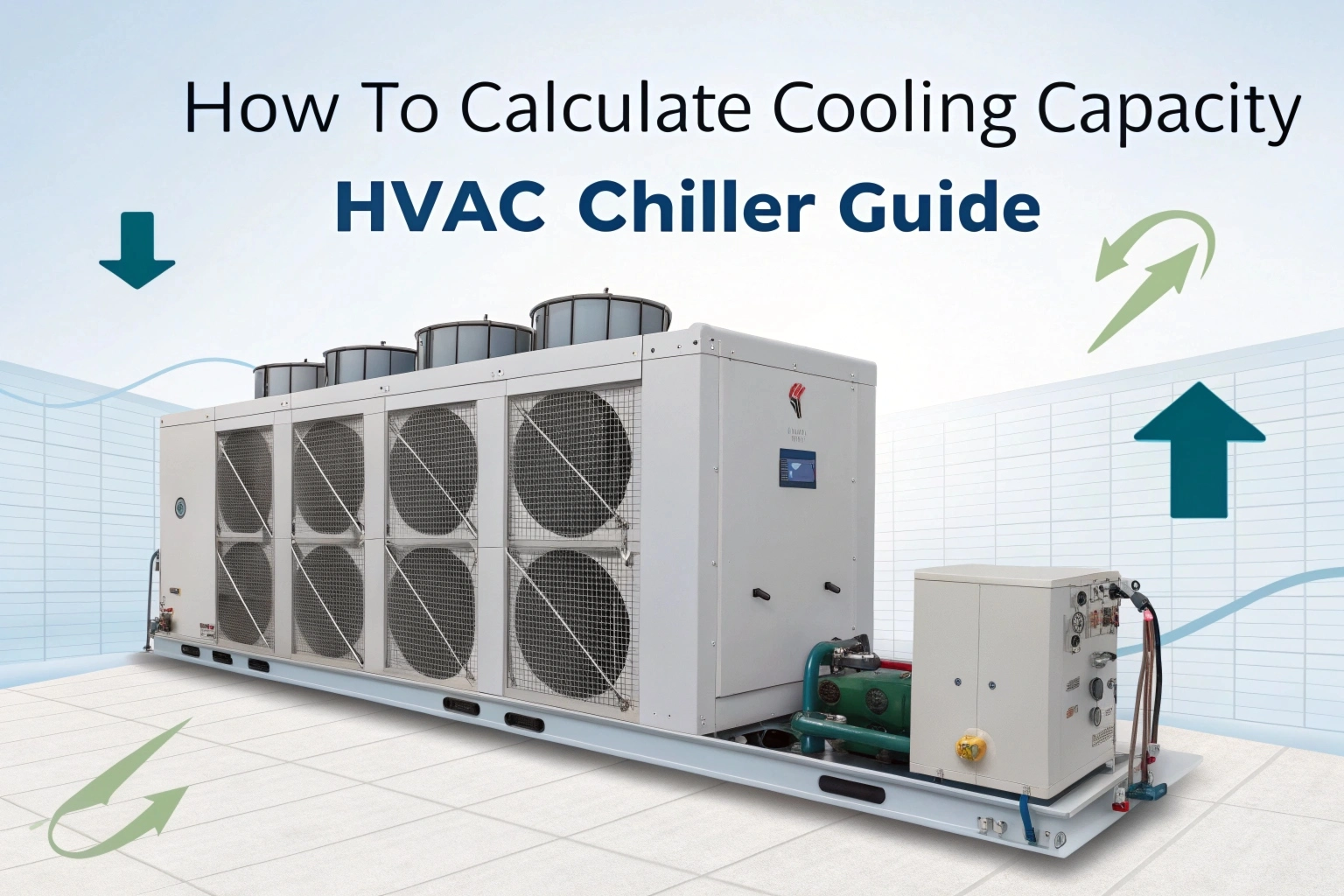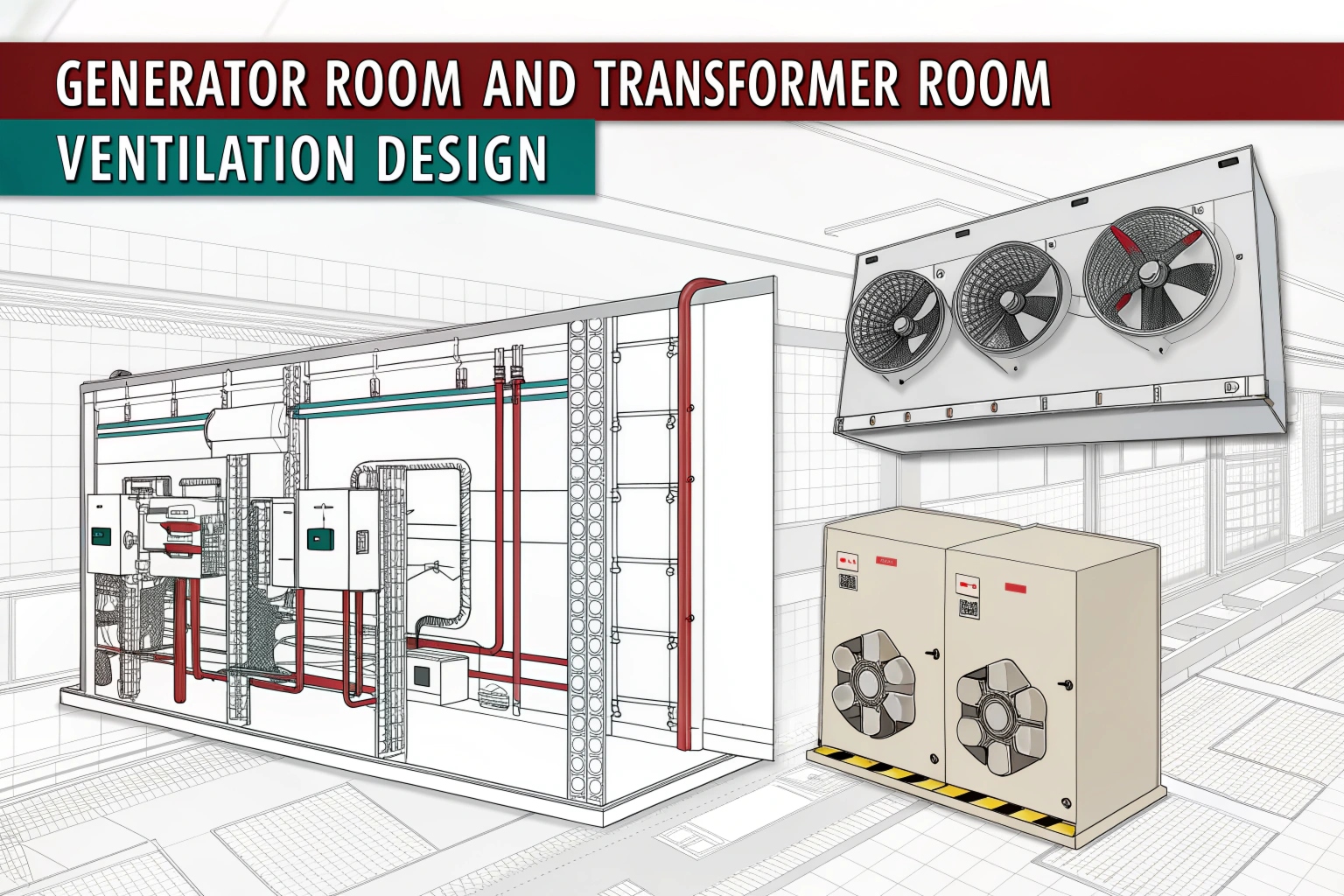Sprinkler systems play a key role in fire safety in many types of buildings. While all sprinkler systems help control fires until firefighters arrive, each system works in a unique way. There are four main types: deluge, wet-pipe, pre-action, and dry-pipe systems. In this article, we will focus on one of the most popular types, the pre-action sprinkler system. We will discuss how it works, its components, and the different types of pre-action systems.
What is a Pre-Action Sprinkler System?
A pre-action sprinkler system needs two steps to release water. It works well in places where you want to avoid accidental discharge. Like a dry-pipe sprinkler system, water doesn’t sit in the pipes until heat or smoke triggers it. However, the pre-action system adds extra safety with an electrically-controlled valve that detects fire, which sets it apart from the dry-pipe system. This feature helps prevent accidental water release, which can sometimes happen with dry-pipe systems.
There are two types of pre-action systems: single interlock and double interlock. In the single interlock system, the valve must open to let water into the pipes, and then heat must activate the sprinkler heads to release the water. The double interlock system uses air or nitrogen in the pipes to check for leaks and keep the water from releasing if the valve fails. This extra layer of security makes the double interlock system a popular choice, even though it is harder to install.
How Does a Pre-Action Sprinkler System Work?
A pre-action fire sprinkler system is a type of dry sprinkler system. The pipes do not have water in them; instead, water is held back by a pre-action valve. This valve is controlled by an electric signal that gets triggered by heat, smoke, or fire. Here’s how it works:
When a fire is detected, the pre-action valve opens, allowing water to fill the sprinkler pipes. At this point, the system turns into a wet pipe sprinkler system. Each sprinkler head opens separately. The sprinkler head must activate for water to be released onto the fire.
Common Applications for Pre-Action Systems
Pre-action fire sprinkler systems are a good choice for places where water damage would be a big problem, as they lower the risk of accidental discharge. They are often used in:
- Museums
- Freezer warehouses
- Data centers
- Archives
- Libraries
- Computer rooms
- Telecommunications centers
- Process control rooms
Things to Keep in Mind About Pre-Action Systems
Pre-action sprinkler systems work well in places with valuable or sensitive equipment because they have a 2-step activation process that helps prevent accidental discharge. Installing a pre-action system usually costs more than a traditional sprinkler system because it is more complex. Maintaining it also tends to be more expensive and challenging due to its extra components. These systems can include pressurized nitrogen or air in the pipes, which keeps the water from flowing if the valve is mistakenly opened. This type is often used in freezer warehouses.
Types of Pre-Action Sprinkler Systems
There are three main types of pre-action sprinkler systems, each working in different ways:
Single Interlock Pre-Action System
In this system, water enters the pipes only after the fire detection system activates. If a pipe leaks or a sprinkler head gets damaged, no water flows until the detection system confirms a fire. This setup helps avoid accidental water discharge while still being effective in putting out fires.
Non-Interlock Pre-Action System
In this system, water enters the pipes when either the fire detection system or a sprinkler head activates. If a sprinkler head gets damaged, water flows into the system immediately, providing a faster response in case of a fire.
Double Interlock Pre-Action System
This system is the safest option, as water flows only when both the fire detection system and the sprinkler heads activate. It reduces the chance of accidental water discharge, making it perfect for areas where preventing water damage is crucial.
Advantages of the Pre-Action Fire Sprinkler System
- The pre-action fire sprinkler system works best in places where water damage must be avoided, such as data centers, archival vaults, and laboratories.
- It uses a dual-action process to release water, ensuring no accidental water discharge.
- This system protects both from water and fire damage.
- It also suits extremely cold areas, as water does not stay in the pipes and only enters the system when the valve opens, preventing it from freezing.
Drawbacks of the Pre-Action Fire Sprinkler System
- Installing pre-action sprinkler systems can be difficult and expensive because they need many parts, including extra detection devices.
- Regular maintenance is necessary.
- Modifying the system is hard, similar to dry-pipe systems, due to size limits.
- There is a delay before the water gets discharged.
Installing Pre-Action Fire Sprinkler Systems in Buildings
To install pre-action fire sprinkler systems, you need a network of pipes connected to a reliable water supply. This system can be complex because it requires more careful planning than other systems. The installation needs skilled sprinkler engineers. New York Engineers have the knowledge and experience to design, install, and maintain pre-action fire sprinkler systems.
Building codes stress the importance of sprinkler systems in buildings as the best way to handle potential fire emergencies. Installing pre-action fire sprinklers in areas sensitive to water is necessary, not optional, since other sprinkler systems can accidentally discharge water.
Pre-Action Sprinkler System vs. Other Sprinklers
Pre-action sprinklers belong to a group that includes wet-pipe, deluge, and dry-pipe systems. All these sprinklers help put out fires before they become dangerous in buildings. Choosing a specific type of sprinkler depends on factors like what items are stored and how quickly a response is needed.
For example, deluge sprinklers always stay open, so they respond as quickly as wet-pipe systems. In contrast, pre-action and dry-pipe systems have some delay. Let’s look at their differences:
- Wet Pipe Fire Sprinkler Systems: These systems keep water in the pipes, ready to spray when the sprinkler head is activated during a fire. They act instantly, which reduces fire damage.
- Dry-Pipe Sprinkler Systems: These systems work well in very cold environments where water in wet-pipe systems might freeze. They don’t store water in the pipes until they are needed. Instead, the pipes hold air or nitrogen gas. When heat triggers the sprinkler head, the gas is released, lowering the pressure in the pipe. This drop opens a valve to let water flow.
- Deluge Sprinkler Systems: These systems are not common in homes due to how they function. Their sprinkler heads stay open and do not use heat sensors to activate. A valve controlled by a special alarm opens and releases large amounts of water until someone manually turns it off. Deluge systems suit places where fires might happen often, and they require manual shut-off after use.
- Pre-Action Sprinkler Systems: We’ve already mentioned these systems. Their main benefit is that they are less likely to cause false alarms or accidental discharges, which helps prevent water damage from unneeded releases.
Conclusion
Pre-action sprinkler systems are essential for areas sensitive to water because they offer extra security and two functions. These systems are commonly used in places like museums, archive vaults, data centers, and other spaces where water damage could be disastrous. They also work well in cold climates where regular wet-pipe systems might freeze, as the water is not immediately stored in the pipes.
FAQs
What is a sprinkler pre-action system?
A pre-action sprinkler system needs a step to happen before it releases water. Here’s how it works: a fire detection system, like a smoke detector, senses a fire first. Then, when the fire heats the area, a sprinkler head activates and sprays water.
What is the difference between dry pipe and pre-action sprinkler systems?
Dry pipe and pre-action systems are similar, but a pre-action valve controls the water flow in a pre-action system. Pre-action systems mix features of wet, dry, and deluge systems and come in two types. The first type, called a single interlock, activates when a heat or smoke detector triggers it.
What is the difference between deluge and pre-action systems?
Deluge systems apply water over an entire area and are used in special hazard places. Pre-action systems protect areas where water damage from broken sprinklers or pipes needs to be avoided.
What is the main advantage of a pre-action sprinkler system?
The biggest advantage of a pre-action system is that it helps prevent accidental water discharge. Because the system needs to fill with water and each sprinkler head must open individually, it is less likely to release water by mistake.
Read More – Double Interlock Preaction System

